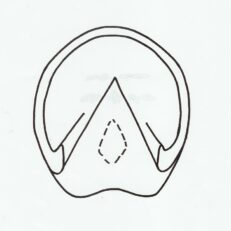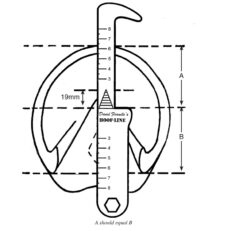HOW TO PREVENT PEAK PERFORMANCE
There are six bad habits creeping into hoof preparation and the fitting of shoes.
1. Quarter clipped shoes, rolled toe and square toed shoes.
2. Deliberate spooning of the heels on work shoes and race plates.
3. Leaving bar pressure under the heels.
4. Not achieving a T-square at the heels.
5. Not eliminating flares everywhere in the hoof.
6. Using shoes that are too heavy and with nail holes set too coarse for the white line.
Now let me explain in more detail the detrimental effects of these six main problems for the horse.
-
Continue Reading ››
THE HOOF AFTER THE FLOODS
DOES THE HOOF SUIT THE EVENT?
Far too often the hoof does NOT suit the event and the end result is a very mediocre level of performance for the horse and a bewildered rider.
This is as much an owner/rider judgment problem as well as a farrier’s lack of attention in advising the client, but first the farrier needs to know how the client expects the horse to perform in order that he can set up the correct hoof care procedures.
The pleasure horse is about 80% of today’s horse population but probably less than 20% of their owners have grown up with horses and know how important correct hoof care can be. So many others who own and ride their horses haven’t yet seen the need to understand what is below the girth, so this puts a lot of responsibility on the farrier to educate his clients about hoof care which in turn allows them to fulfill their duty of care to the horse and also be a … Continue Reading ››
CLUB FEET – THE BRUTAL TRUTH
After pussy footing around and skirting sensitive issues with delicate statements, there finally comes a time when the only thing to do is to be brutally honest, and this certainly applies to the club footed horse. I have written several articles on how to maintain the club footed horse, and I have always stated categorically that the owner has to realise that a club footed horse is a high maintenance horse for life.
However, I still receive more queries about club footed horses than about any other hoof problem. The queries are generally raised because the owner is about to buy the horse, or has bought the horse, or wants to breed from the horse or the foal has just arrived. The hoof is always ‘a little boxy’ and the query is always ‘but it can be fixed cant it?
The brutal truth is NO a club foot can’t be fixed, and YES it … Continue Reading ››
HOOF CARE FOR THE CLUB FOOTED HORSE
CREEPING TOES
Creeping Toes sounds like it might be a fungal growth or an alien invasion, however it is my terminology for a problem that is creeping into the world of hoof care.
Creeping Toes answers a lot of questions when related to the long toe/low heel problems, and it would seem that the majority of us just don’t recognise where the actual sole line should be at the front of the hoof.
If you look at the cleaned out sole of the hoof that is due to be trimmed, and if you view it as a saucer held up and nearly full of water, the level there is an even water level line all around the edge. This describes where that junction of the cleaned out sole should meet the laminae/white line at the inside edge of the hoof wall, known as the true road map in the bottom of the hoof.
Continue Reading ››
OVER-REACHING AND FORGING: CAUSE AND CORRECTION
Over-reaching is when the toe of the back foot hits the heel bulbs of the front foot.
Forging is when the toe of the back foot hits the bottom of the front foot.
Both cause an interruption to the horse’s cadence and cause shoes to be pulled during work, and also causes injury and pain to the horse.
Both are caused by imbalance in the bottom of the hoof.
OK that is all pretty easy to determine, but why is it so common?
The answer lies in one or more of a variety of reasons. Often we don’t pare out enough sole in front of the hoof to find the true junction of the clean sole and the hoof wall at the toe, so we don’t trim the toe down short enough … Continue Reading ››
THE NATURAL HOOF SHAPE and ‘RIGHT HANDED DISEASE’.
To quote Dr Doug Butler in his book The Principles of Horseshoeing, ‘The hardest thing a farrier has to deal with is making his hands do exactly what his mind and eyes are telling them to do.’ And indeed it seems that as soon as some farriers pick up the sole knife or the nippers or the rasp, from there on the hoof takes on a completely different shape from that which was first intended.
IF we use the rasp too heavily when dressing the front of the hoof and IF, instead of just correcting the thickness at the toe, we allow the rasp to continue the stroke to go past the toe section and along the side walls, the hoof will have a correct toe but narrow sides and the wrong shape hoof.
When rasping the toe it is important to do just that, and not allow the rasp to travel around the side of the hoof. It may help to mark the outer limits of the toe with a … Continue Reading ››
SHORT FROGS, LONG FROGS AND BENT FROGS
- The presence of long toes/low heels
- The presence of high heels/short toes
- The presence of uncontrolled flares anywhere in the hoof wall.


